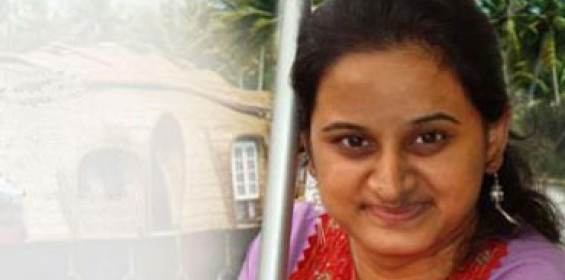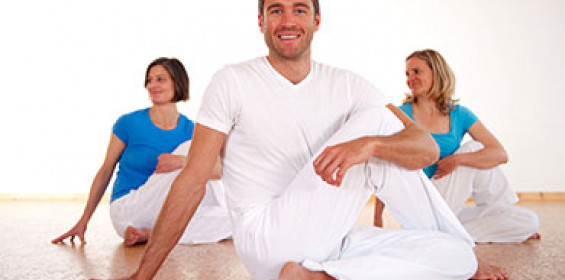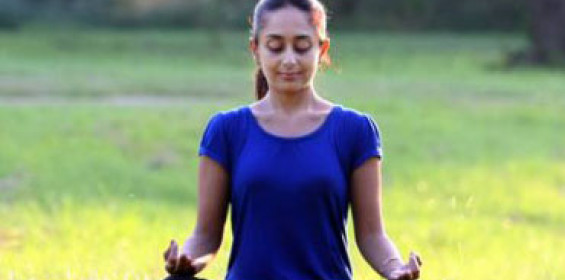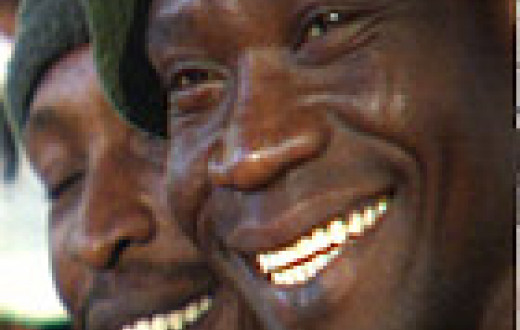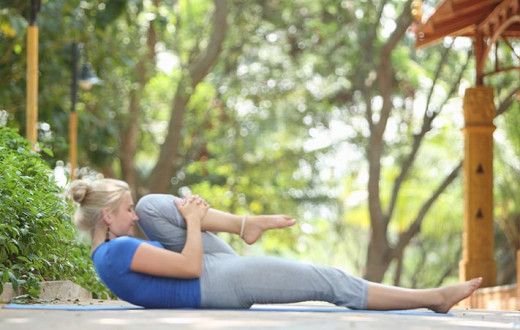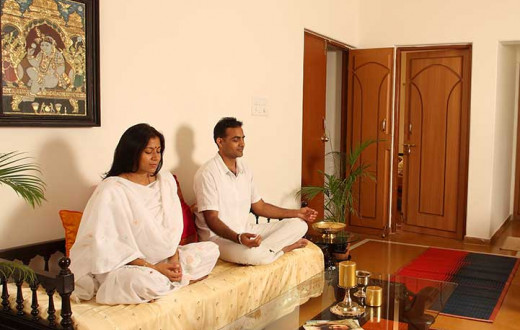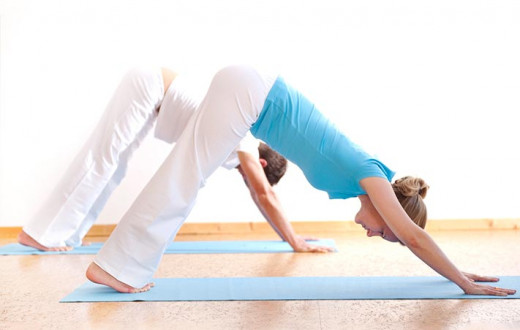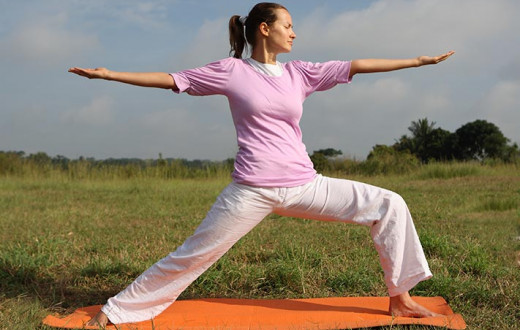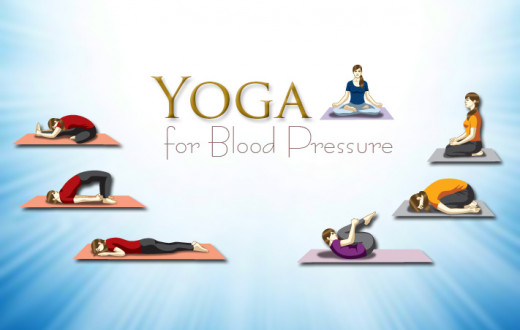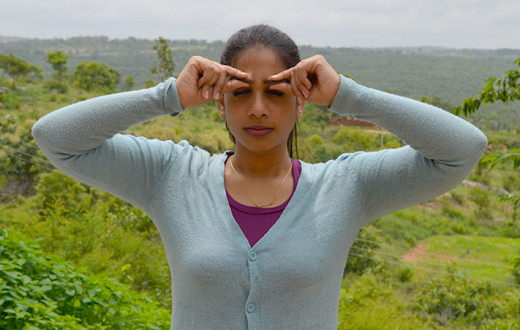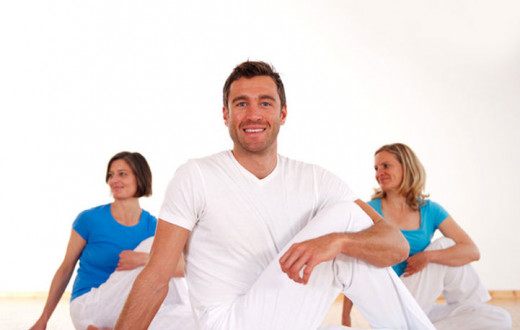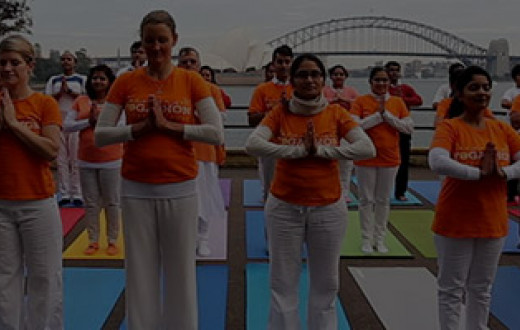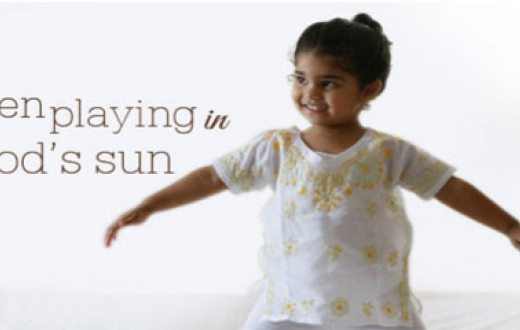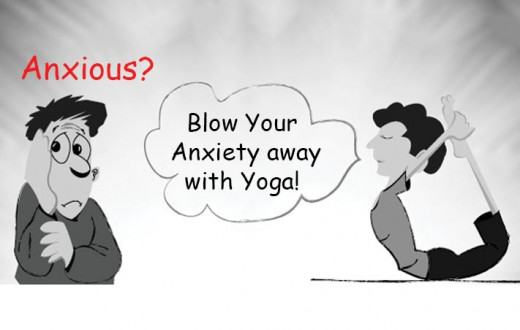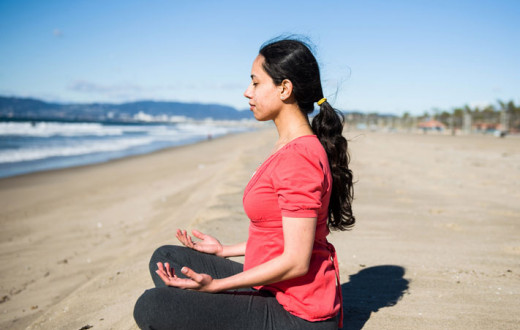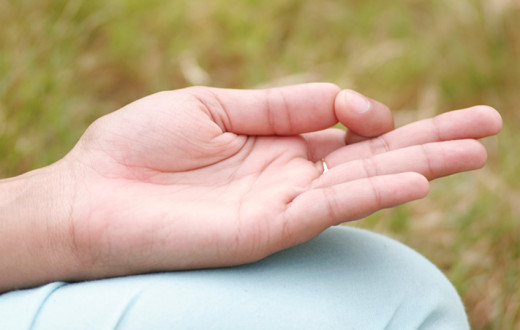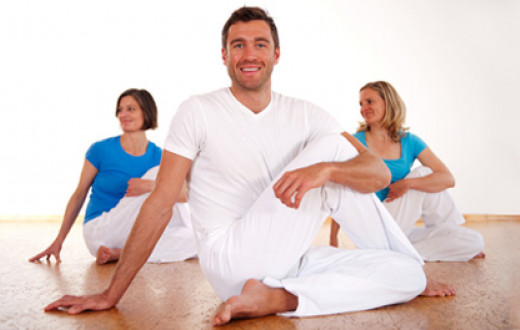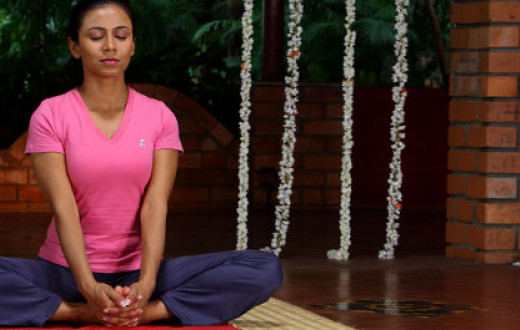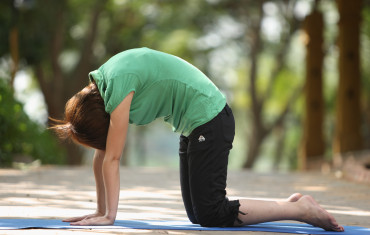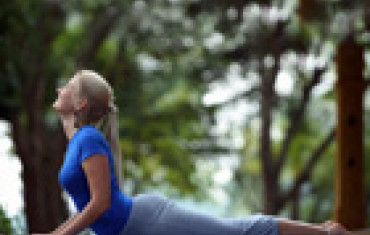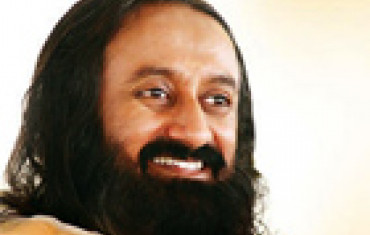How to do One-Legged Forward Bend (Janu Shirasasana)
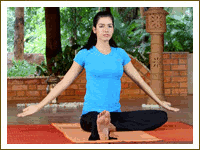
- Sit up with the legs stretched out straight in front of you, keeping the spine erect.
- Bend the left knee and place the left foot against the right thigh, keeping the left knee on the floor.
- Breathing in, raise both arms above your head and stretch up, and twist a little to the right from the waist.
- Breathing out, bend forward from the hip joints keeping the spine straight, directing your chin to the toes.
- If you can, hold on to your big toes and, pointing your elbows to the ground, move forward as you pull on your toes.
- Hold. Keep breathing.
- Breathing in, come up and breathing out, bring the arms down to the sides.
- Repeat on the other side.
Benefits of the One-Legged Forward Bend (Janu Shirasasana)
- Stretches lower back
- Massages the abdominal organs and tones the shoulders
View All - Sitting yoga asanas that can energize & relax
<<Chair Pose Seated Forward Bend >>
Yoga practice helps develop the body and mind bringing a lot of health benefits yet is not a substitute for medicine. It is important to learn and practice yoga postures under the supervision of a trained Sri Sri Yoga teacher. In case of any medical condition, practice yoga postures after consulting a doctor and an Sri Sri Yoga teacher. Find an Sri Sri Yoga program at an Art of Living Center near you. Do you need information on programs or share feedback? Write to us at info@srisriyoga.in
FAQ's on Janu Shirasasana
Forward Bend should be avoided by those who have undergone surgery or have injury or pain in the knees, hips, pelvis, shoulders, rib cage, neck, or spine.
"Benefits of Paschimottanasana (the seated forward bend) *Stretches lower back, hamstrings, and hips. *Massages and tones the abdominal and pelvic organs. *Tones the shoulders."
"Benefits of Standing Forward Bend *Stretches the hamstrings and muscles on the back of the body *Invigorates the nervous system by increasing circulation *Increases blood flow to the brain *Tones the abdominal organs"
"Avoid Forward bend if you have: *Back injuries *Spondylitis *Hyperextended knees"
"Forward bending is harmful if you have weak abdominal, spinal, and back muscles. Also, avoid practicing forward bend in: *Back injuries *Spondylitis *Hyperextended knees"
Utthan Pristhasana, Lizard pose, is a hip opener variant with the forearms on the floor. Moving the front foot onto its side so the knee comes to the ground enables a transition to a related backbend, Rajakapotasana. In Sanskrit, uttan means stretch deep out, pristha means back of the body and asana means posture.
Forward Fold is good for lower back pain as it stretches the hamstrings and the muscles on the back of the body.
"Forward fold hurts when you have weak abdominal, spinal, and back muscles. Also, avoid practicing forward bend in: *Back injuries *Spondylitis *Hyperextended knees"
"You can master forward bend in both the sitting and standing poses. If you feel you can do better with the support of props, do not be shy to use them. With practice, you can plan to do away with props in the future. Keep your upper back straight. Don't let your shoulders turn inward. Keep your legs straight without hyperextending them. Fold your torso forward from your hips, not the upper back Pull your belly upward and push the thighs down"
You will be unable to fold your legs when muscles of the leg, hips, thighs, hamstrings are stiff and inflexible. Those who sit in a cross-legged position on the floor have flexibility in the leg region.
"Yes, bending exercise is good as you get the following benefits: *Stretches the hamstrings and muscles on the back of the body *Invigorates the nervous system by increasing circulation *Increases blood flow to the brain *Massages the abdominal organs *Tones the shoulders"
As forward bendings stretches your hamstrings and spine it aids in the increase of height.
In forward bends, the head goes toward the knee, such that fresh oxygenated blood flows to the head. It results in a calm mind by reducing stress, depression, and worry.
"Benefits of the One-Legged Forward Bend (Janu Shirasasana) *Stretches lower back *Massages the abdominal organs and tones the shoulders"
In yoga, the Sanskrit word janu means knee, shirsha or sirsa means head, and asana means pose or posture
Janu Sirsasana stretches the hamstrings, hips, thighs, and muscles on the back of the body.
"To perform Janu Sirsasana or one-legged forward bend, follow these steps: *Keeping the spine erect, sit up with straight legs stretched out in front of you. *Bend the left knee and place the left foot against the right thigh, keeping the left knee on the floor. *Breathing in, raise both arms above your head and stretch up. *Breathing out bend forward from the hip joints keeping the spine straight, directing your chin to the toes. Attempt to touch the head to knees. *If you can, hold on to your big toes and, pointing your elbows to the ground, move forward as you pull on your toes. *Hold. Keep breathing. *Breathing in, come up and breathing out, bring the arms down to the sides. *Repeat on the other side."
"You can improve head to knee pose in the both sitting and standing positions. *If you feel you can do better with the support of props, do not be shy to use them. *With practice, you can plan to do away with props in the future. *Keep your upper back straight. *Don't let your shoulders turn inward. *Keep your legs straight without hyperextending them. *Fold your torso forward from your hips, not the upper back *Pull your belly upward and push the thighs down"
"To reach head to knees, follow these steps: *Keeping the spine erect, sit up with straight legs stretched out in front of you, . *Bend the left knee and place the left foot against the right thigh, keeping the left knee on the floor. *Breathing in, raise both arms above your head and stretch up.. *Breathing out bend forward from the hip joints keeping the spine straight, directing your chin to the toes. Attempt to touch the head to knees. *If you can, hold on to your big toes and, pointing your elbows to the ground, move forward as you pull on your toes. *Hold. Keep breathing. *Breathing in, come up and breathing out, bring the arms down to the sides. *Repeat on the other side."
"Knee to chest happens in Wind relieving pose or Pavanmuktasana, One-Legged Forward Bend (Janu Shirasasana), and Standing Forward Bend (Uttanasana). The benefits are: Strengthens the back and abdominal muscles Tones the leg and arm muscles Massages the intestines and other abdominal organs Helps relieve constipation and gas Eases tension in the lower back"
"The head-to-knee forward bend works on: *Lower back muscles *The abdominal muscles and the spine *Shoulder muscles"

